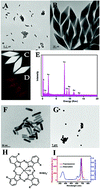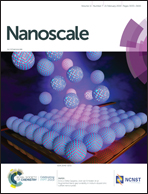AlPcS-loaded gold nanobipyramids with high two-photon efficiency for photodynamic therapy in vivo
Abstract
Recent years have witnessed significant progress in the field of two-photon-activated photodynamic therapy (TP-PDT). However, traditional photosensitizer (PS)-based TP-PDT remains a critical challenge in clinics due to its low two-photon absorption cross sections. Here, we propose that the therapeutic activity of the current photosensitizer, sulfonated Al-phthalocyanine (AlPcS), can be efficiently excited via plasmonic-resonance energy transfer from the two-photon excited gold nanobipyramids (GBPs) and further generates cytotoxic singlet oxygen for cancer eradication. GBPs possess large two-photon absorption cross sections, excellent photostability, and biocompatibility, which can be used for a high two-photon light-harvesting material in biomedical applications. We compared the in vitro and in vivo capabilities of AlPcS-loaded GBPs as a TP-PDT agent for theranostic applications by benchmarking them against those of the extensively studied gold nanospheres (GNS) and nanorods (GNR). Although all these Au nanostructures could cause enhanced PS two-photon excitation fluorescence and improved singlet oxygen generation capability via the plasmonic resonance-energy transfer process, GBP-AlPcS exhibited the highest two-photon efficiency for photodynamic therapy. Remarkably, in vivo experiment results clearly indicated that the GBP-AlPcS caused efficient suppression of tumor growth and minimal adverse effects on orthotopic A549 human lung tumor xenografts. The system presents great efficiency in improving the treatment depth and precision of traditional photodynamic therapy.

- This article is part of the themed collection: International Year of the Periodic Table: Precious metals for cancer treatment


 Please wait while we load your content...
Please wait while we load your content...